The packaging of homemade soap is more than just an aesthetic consideration. It plays a vital role in protecting the product, communicating your brand values, and enhancing the overall customer experience. For hobbyists and small-scale soap makers, learning how to package homemade soap creatively and eco-friendly can make a difference in how customers perceive your product. Whether you’re gifting soap, selling at a market, or shipping it to customers online, the proper packaging safeguards your soap and leaves a lasting impression.
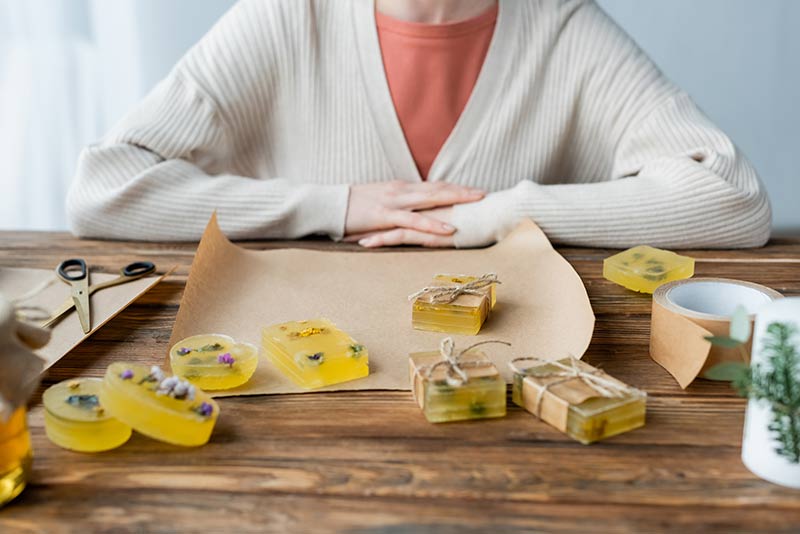
How to Package Homemade Soap
Packaging homemade soap doesn’t have to be complicated or costly, but it should reflect your brand’s personality and align with your product’s purpose. Various methods for packaging soap exist, each offering its own advantages depending on your goals, whether you’re emphasizing aesthetics, sustainability, or practicality.
One of the most popular ways to package soap is with simple wraps or boxes that offer protection while displaying the unique qualities of your handmade product. Beyond functionality, the packaging offers a chance to show off your creativity, whether through rustic designs, personalized touches, or eco-friendly materials.
Let’s dive into several techniques for packaging homemade soap that are affordable, easy to execute, and visually appealing.
Choosing the Right Packaging Materials
The choice of materials is key when deciding how to package your homemade soap. Not only does it impact how the soap is perceived, but it also affects your packaging’s sustainability. Eco-conscious consumers appreciate it when brands use packaging that aligns with environmentally friendly practices.
Some of the most popular materials for packaging homemade soap include:
- Kraft Paper: Natural, recycled paper that gives a rustic look and can be quickly wrapped around the soap.
- Wax Paper is ideal for preventing moisture from penetrating the soap while still being lightweight and easy to wrap.
- Tissue Paper: Adds a soft, luxurious feel to soap packaging and is available in various colors.
- Fabric: Using cotton, linen, or burlap for soap wrapping provides a reusable and natural packaging solution.
- Cardboard Soap Boxes provide more formal packaging that can be customized with your brand design, giving it a professional look.
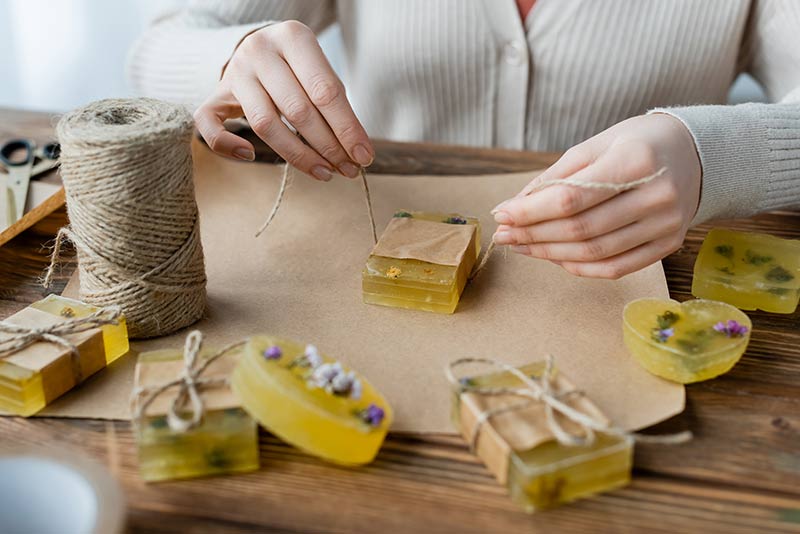
Selecting a suitable material allows you to balance aesthetics, practicality, and sustainability. Opting for recyclable or biodegradable materials will also resonate with consumers increasingly seeking environmentally responsible brands.
Wrapping Soap with Paper
Wrapping soap in paper is one of the most accessible and versatile methods of packaging homemade soap. The types of paper you use will vary depending on your aesthetic and functional needs.
- Kraft Paper: A favorite for its durability and natural look, kraft paper can be used to wrap soap in a rustic, eco-friendly way. It’s sturdy, and you can easily add labels, stamps, or stickers to personalize it.
- Wax Paper: This is an excellent option for soap with high glycerin content, as it helps protect against moisture. Wax paper wraps can be secured with twine or a sticker.
- Tissue Paper: Perfect for a more delicate or colorful presentation, tissue paper adds a decorative element. You can mix and match colors to fit a seasonal or event theme.
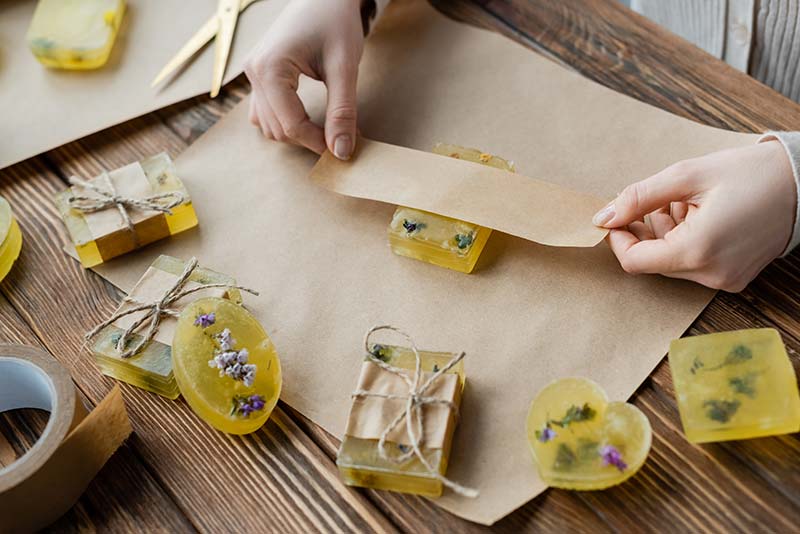
Once the soap is wrapped, adding a small label, sticker, or ribbon can enhance its look and make it more professional.
Packaging with Fabric: A Natural Touch
If you’re aiming for an all-natural or organic feel, fabric packaging is an excellent choice. Cloth or burlap can give your homemade soap a handmade, artisanal touch. Fabric wraps are also eco-friendly and reusable, a big bonus for environmentally conscious consumers.
To package with fabric:
- Cut fabric squares that are large enough to wrap around the soap completely.
- Place the soap in the center of the fabric and fold the corners in.
- Secure the fabric with twine, ribbon, or a decorative button for a charming finish.
Using different types of fabrics—like cotton, linen, or muslin—allows you to offer a variety of looks for your soap. Burlap gives a rustic, farmhouse style, while linen or cotton can create a more polished, refined appearance.
Soap Boxes for a Professional Look
For a more polished and professional presentation, consider using cardboard soap boxes. These boxes are available in various sizes and styles, from plain kraft boxes to fully customized printed boxes with your brand’s logo, ingredients, and instructions.
Using a custom soap box provides several benefits:
- Protection: It keeps the soap clean and safe during storage and transport.
- Branding: You can print directly on the box, allowing you to communicate your brand message and include all necessary product details.
- Presentation: A neatly packaged soap box can elevate the perceived value of your product, making it suitable for retail display or gifting.
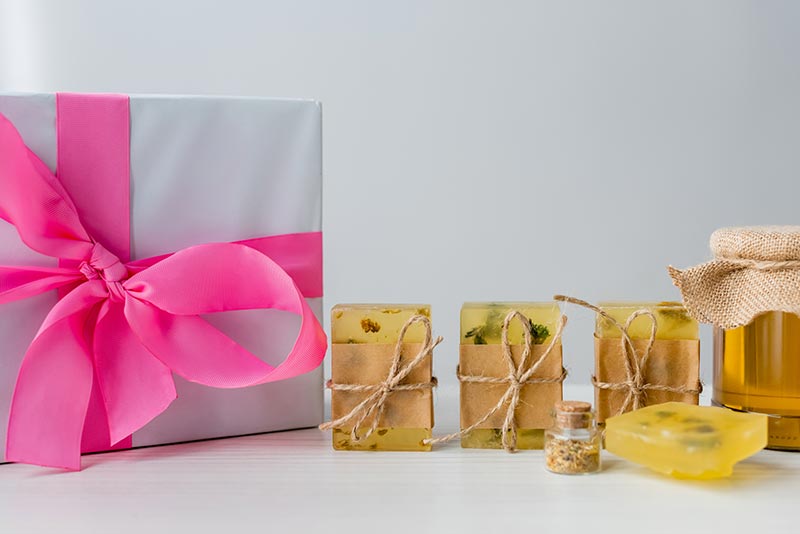
Soap boxes can be designed with cut-out windows to allow customers to see the product inside, an appealing feature in retail settings.
Reusing and Recycling in Soap Packaging
Sustainable practices are becoming necessary in modern packaging, and soap makers have many opportunities to incorporate reusability and recyclability into their packaging design. Consider using packaging materials that can be easily recycled, such as kraft paper, or offer packaging that can be repurposed by the customer, such as fabric wraps or tin boxes.
Another option is minimal packaging, reducing excess materials while protecting the product. This could mean using a simple paper wrap with a compostable label or twine.
Encouraging your customers to reuse or recycle the packaging also aligns your business with green initiatives, which can strengthen your brand image and attract eco-conscious buyers.
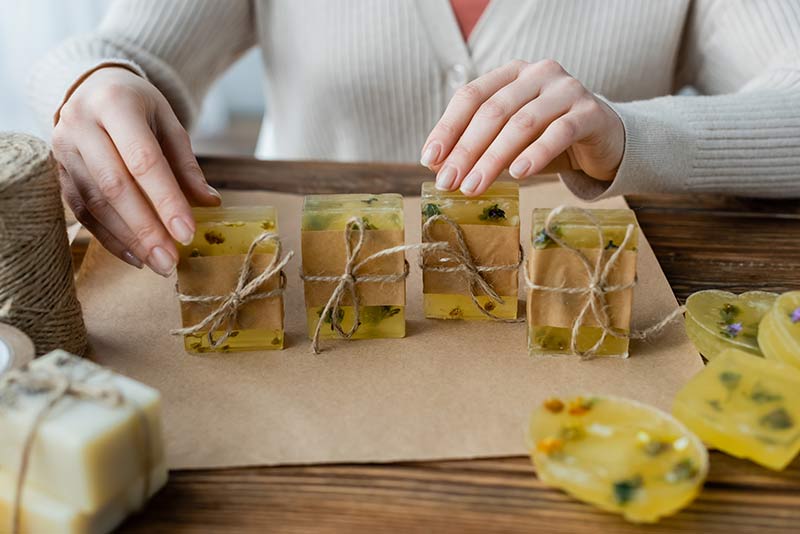
Labeling Homemade Soap: A Branding Opportunity
Proper labeling is essential for communicating important information, such as the ingredients and scent of your soap, and it also serves as a critical branding tool. A creative label can make your soap stand out on a shelf or in an online store, allowing you to showcase your brand’s story.
Some key elements to include on your label:
- Ingredients: Transparency is critical, especially for sensitive skin or allergies customers.
- Usage Instructions: Include tips on best using the soap for optimal results.
- Brand Information: Make sure your logo, brand name, and contact details are easy to find.

Consider adding a unique touch, like a custom stamp, handwritten note, or personalized sticker, to give your soap a unique, handcrafted appeal.
FAQs
How can I make my homemade soap packaging eco-friendly?
Use recyclable or biodegradable materials like kraft paper, fabric, or compostable boxes. Opt for minimal packaging to reduce waste.
What is the best way to protect soap during shipping?
Use a sturdy box with packing materials like shredded paper or bubble wrap to prevent the soap from moving during transit. Ensure the soap is wrapped in protective paper or plastic to avoid moisture damage.
Can I package soap without plastic?
Yes, you can use wax paper, kraft paper, or fabric as alternatives to plastic. These materials still protect the soap while offering eco-friendly options.
Do I need to label homemade soap?
Yes, especially if you plan to sell it. Labels should include ingredients, usage instructions, and your brand’s information to comply with legal standards.
How do I make my soap packaging look professional?
Consider using custom boxes with printed designs or adding personalized labels, ribbons, and stickers to elevate the presentation. Packaging can significantly impact the perceived value of your soap.
Conclusion
The packaging of homemade soap is not just about protecting the product; it’s an opportunity to express your creativity, align with sustainability, and enhance your brand identity. Whether you choose simple kraft paper wraps, custom soap boxes, or eco-friendly fabric options, how you package your soap can leave a lasting impression on your customers. With thoughtful design and materials, you can create beautiful, practical, and environmentally responsible packaging that complements the quality of your handmade soap.


